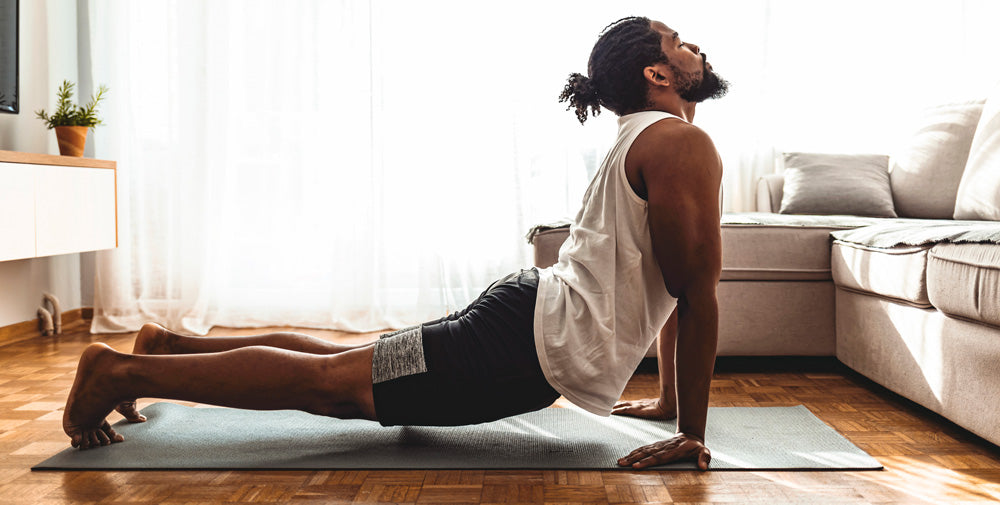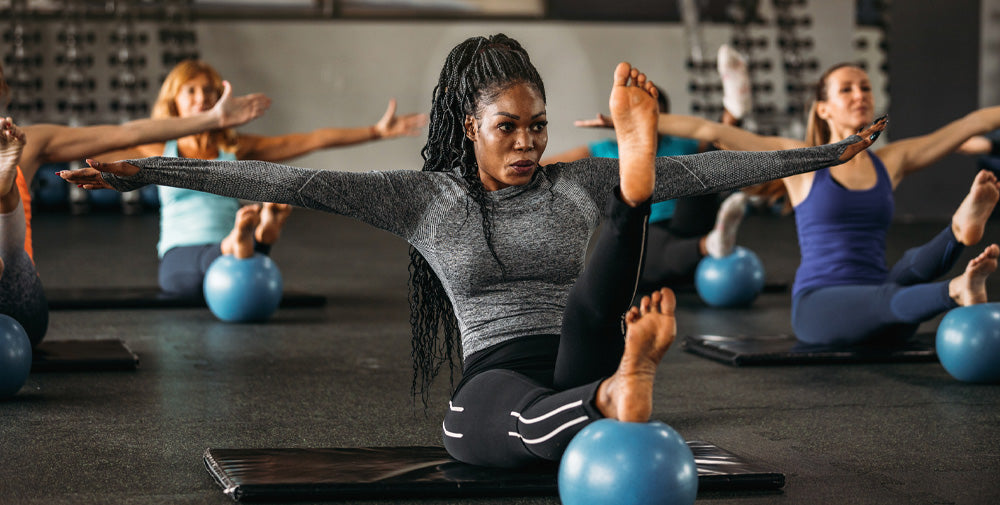How Does Stretching Help Your Back?
Stretching exercises promote flexibility and help your joints maintain a healthy range of motion. Well-stretched muscles are less prone to injury, while less flexible muscles and connective tissues restrict joint mobility, which increases the likelihood of strains and sprains.
Benefits of stretching include: reducing tension in muscles supporting the spine and improving range of motion and overall mobility.
5 Simple Stretching Exercises For Your Back
To help keep your back limber, a stretching and strengthening regimen should target your back, abdominal, and buttock muscles.
Whenever you’re stretching, you should:
- Wear comfortable clothing.
- Stretch on a clean, flat surface that gives you enough space to move freely.
- Not force your body into any difficult or painful positions.
- Move into stretches slowly and avoid bouncing, which can cause muscle strain.
- Hold each stretch for between 15 to 30 seconds so that you can adequately lengthen your muscles and improve your range of motion.
- Repeat each stretch between two to five times since a muscle usually reaches maximum elongation after about four repetitions.
Now, without further ado, here are five simple stretches that you can do to help keep your back limber and loose.
1. Knee-To-Chest Stretch
The knee-to-chest stretch is a simple stretching exercise that you can do before you even get out of bed. This easy stretch relaxes your hips, thighs, and glutes while promoting overall relaxation.
To do the knee-to-chest stretch in bed, lie on your back with both of your knees bent. Then hug your bent left knee into your chest, clasping both hands around your shin. To increase the stretch, gently pull down. Release any tension in your shoulders and neck, and make sure to keep your right leg relaxed in a comfortable position. To loosen your back even more, gently circle your knee in one direction, and then the other. Hold for 30 seconds and then repeat on the other side. You can also do this stretch lying on the floor, as well.
2. Bridges
Bridges work your gluteus maximus, which is the large muscle of the buttocks, and one of the most important muscles in your body. Keeping your gluteus maximus strong can help support your lower back.
To perform a bridge, lie on the ground and bend your knees, placing your feet flat on the floor hip-width apart. Then press your feet into the floor, while keeping your arms by your sides. Next, raise your buttocks off the ground until your body forms a straight line from your shoulders to your knees. Squeeze your buttocks with your shoulders remaining on the floor. Then lower your buttocks to the ground and rest for a few seconds. Repeat 10 to 15 times.
3. Cat-Cow Stretch
To do the cat-cow stretch, start on your hands and knees with your wrists directly under your shoulders, and your knees directly under your hips. Point your fingertips to the top of your mat, and place your shins and knees hip-width apart. Center your head in a neutral position and soften your gaze downward.
Then curl your back up toward the ceiling like an angry cat. Hold for a count of five, and then return to the starting position. Next, pull your stomach down to the floor, hollowing out your back. Hold for a count of five, and then return to the starting position. Repeat 10 to 15 times, and then rest by sitting back on your heels with your torso upright.
4. Piriformis Stretch
The piriformis stretch works your piriformis muscle, which is located deep in your buttocks.
To perform the piriformis stretch, lie on your back with both of your knees bent and your feet flat on the floor. Then place your right ankle at the base of your left thigh. Next, place your hands behind your left thigh and pull up toward your chest until you feel a stretch. Hold this position for 30 seconds to a minute. Then stretch the opposite side.
5. Flexion Rotation
The flexion rotation exercise is a simple stretch that you can do since it helps stretch your lower back and buttocks.
To perform the flexion rotation exercise, lie on your right side with both of your legs straight. Bend your left leg, hooking your foot behind your right knee. Then grasp your left knee with your right arm, and place your left hand behind your neck. Next, slowly rotate your upper body backwards by touching your left shoulder blade to the floor. You should feel a mild stretch in your lower back. Repeat the rotation stretch 10 times, holding each stretch for one to three seconds before slowly moving out of the rotation. Then do this stretch on your left side.
*The links used in this article are being provided as a convenience and for informational purposes only; they do not constitute an endorsement or an approval by Iovate Health Sciences International Inc. or any of its affiliates (“Iovate”) of any of the products, services or opinions of the corporation or organization or individual. Iovate bears no responsibility for the accuracy, legality or content of the external site or for that of subsequent links. Contact the external site for answers to questions regarding its content.



